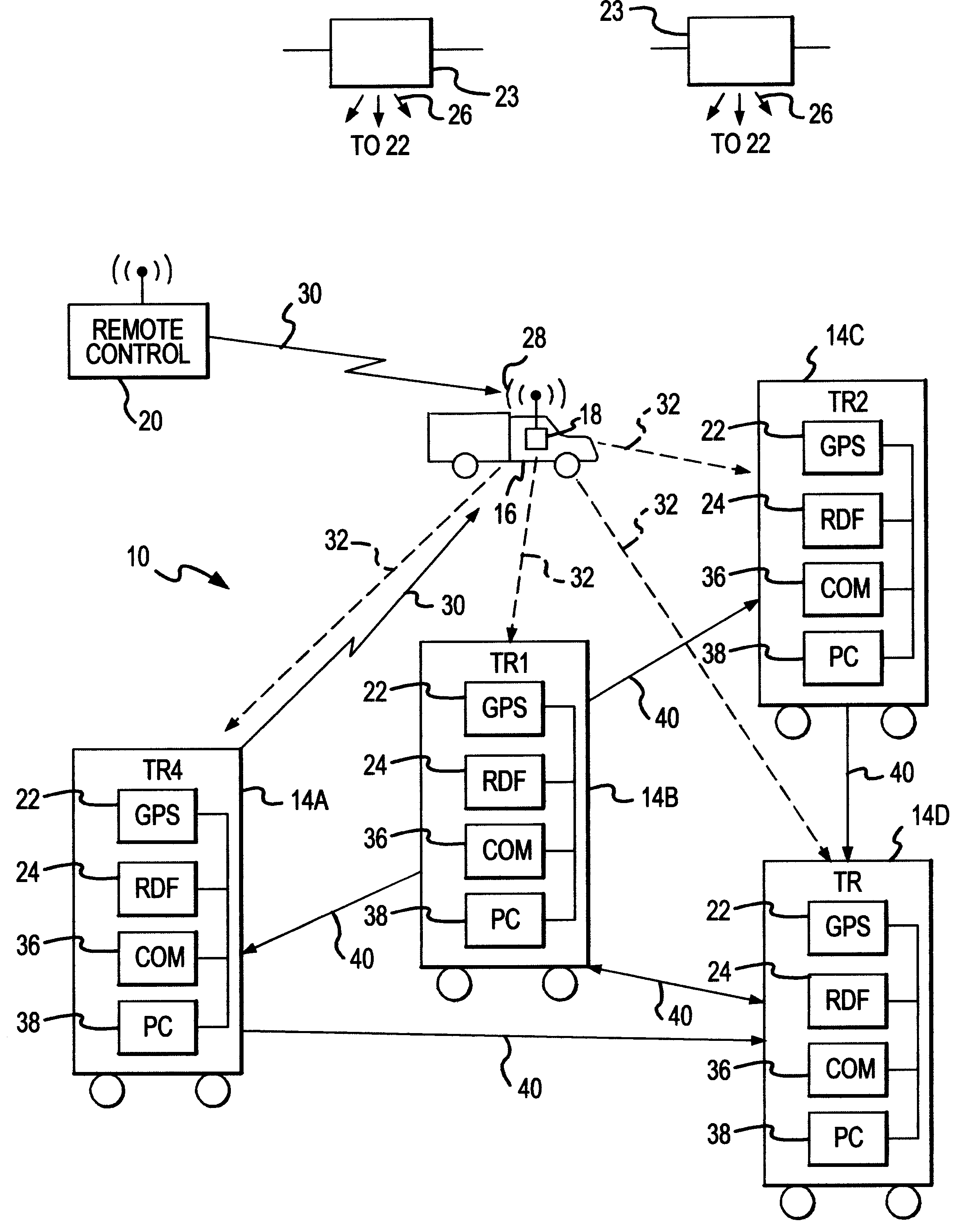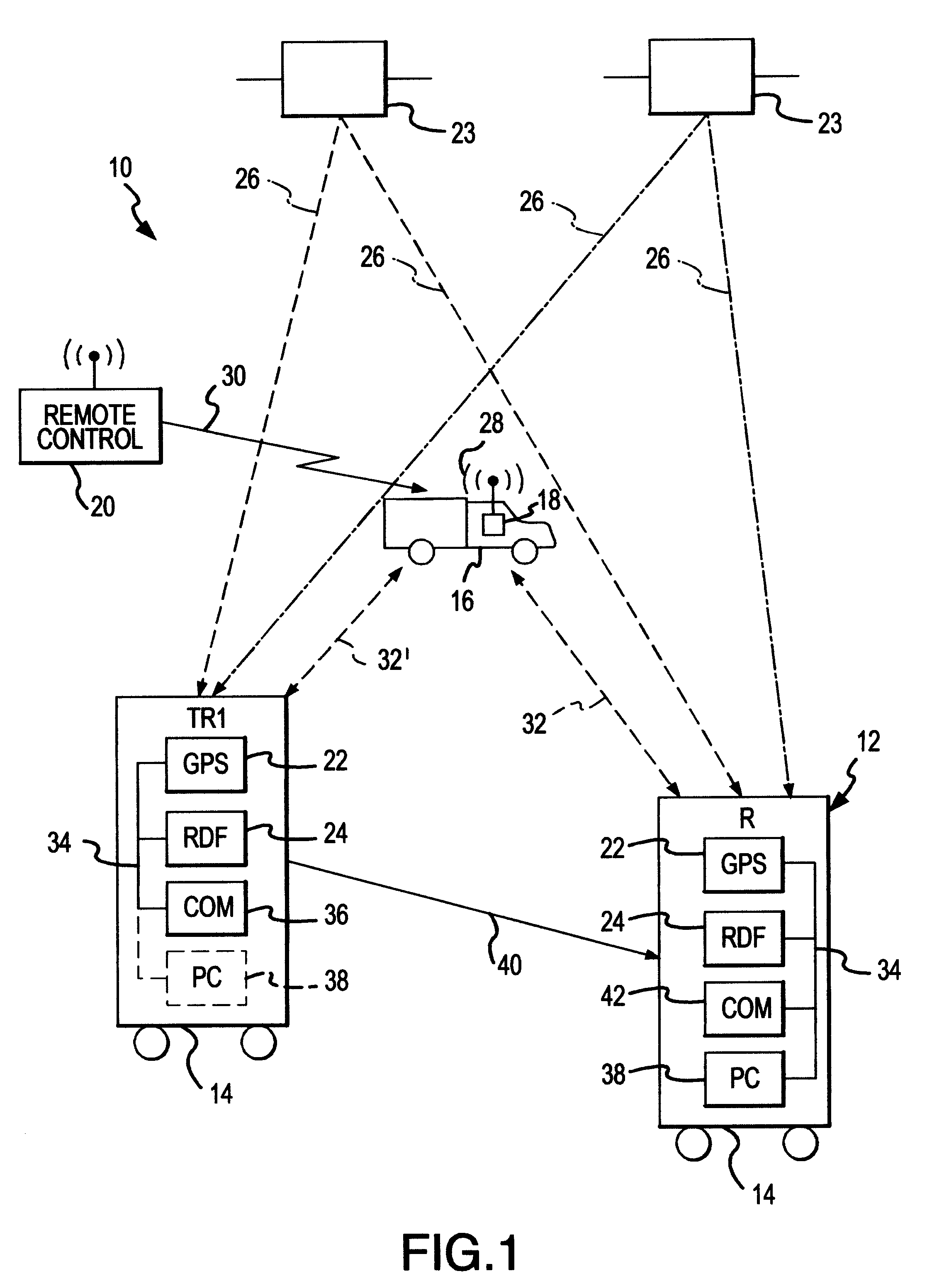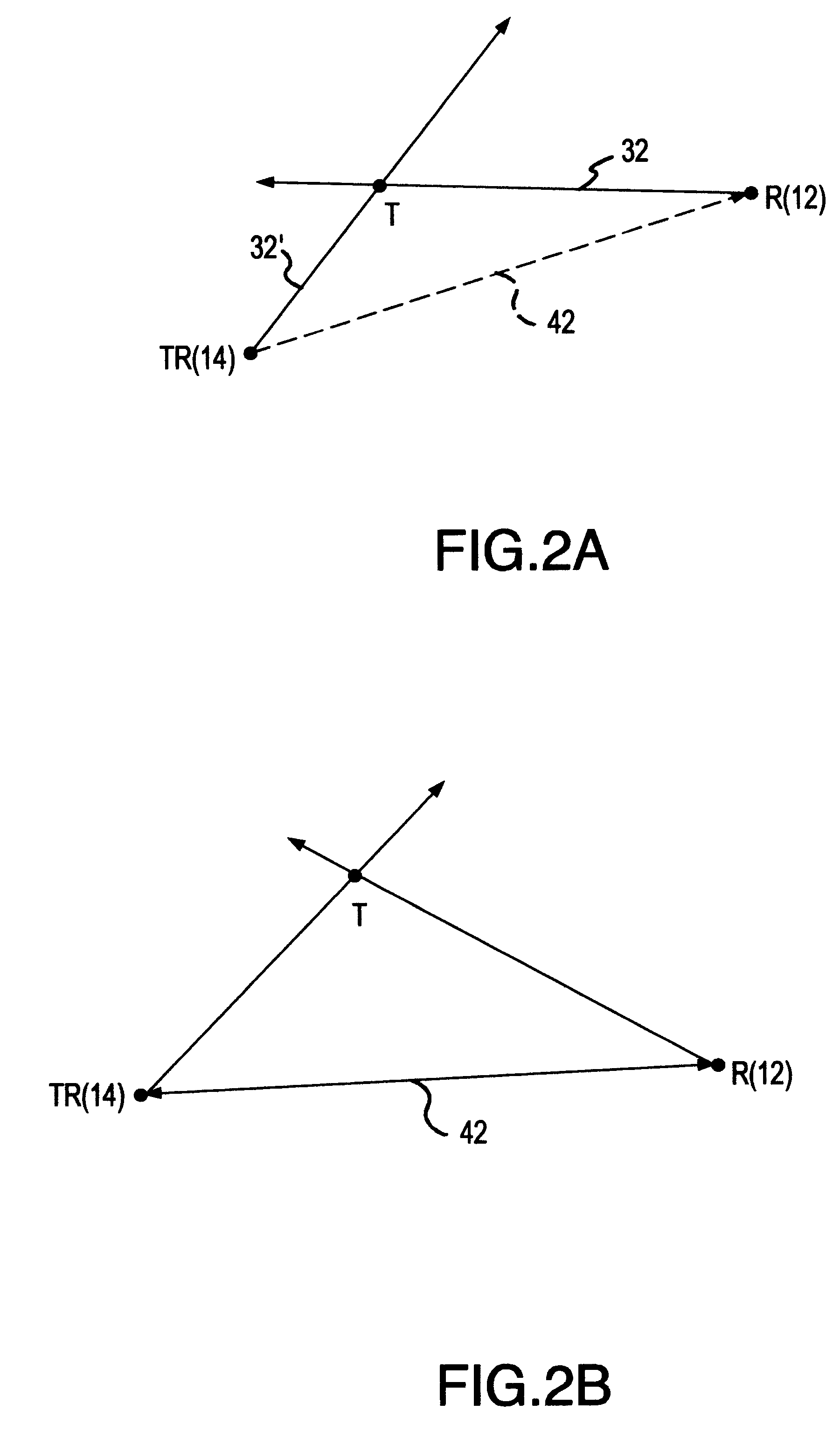Mobile tracking and positioning system
a positioning system and mobile technology, applied in traffic control systems, complex mathematical operations, analog and hybrid computing, etc., can solve the problems of inherently inflexible stationary triangulation systems, system no real precision location or mapping capabilities, and each has its own limitations and drawbacks
- Summary
- Abstract
- Description
- Claims
- Application Information
AI Technical Summary
Benefits of technology
Problems solved by technology
Method used
Image
Examples
Embodiment Construction
Referring now to FIG. 1, a mobile tracking and positioning system 10 according to a preferred embodiment of the invention is shown in schematic form. The system 10 of FIG. 1 has a mobile receive (R) station 12, a mobile transmit and receive (TR) station 14, and a mobile target 16 to be tracked and located by receive station 12 and transmit and receive station 14. The target 16 has a transmission unit 18 for selectively broadcasting a communication signal 28 (such as a radio signal) in response to the occurrence of a tracking and positioning initiation event. In the case where the target 16 is a vehicle, the initiation event may be the unauthorized movement (e.g., theft) of the vehicle, or it may be the receipt of an activation or initiation signal 30 broadcast from a remote control unit 20 (perhaps a pocket-sized signal transmitter carried by the vehicle's owner) to the target 16 or by a transmit and receive station 14.
The transmit and receive station 14 and the receive station 12 a...
PUM
 Login to View More
Login to View More Abstract
Description
Claims
Application Information
 Login to View More
Login to View More - R&D
- Intellectual Property
- Life Sciences
- Materials
- Tech Scout
- Unparalleled Data Quality
- Higher Quality Content
- 60% Fewer Hallucinations
Browse by: Latest US Patents, China's latest patents, Technical Efficacy Thesaurus, Application Domain, Technology Topic, Popular Technical Reports.
© 2025 PatSnap. All rights reserved.Legal|Privacy policy|Modern Slavery Act Transparency Statement|Sitemap|About US| Contact US: help@patsnap.com



